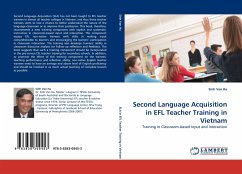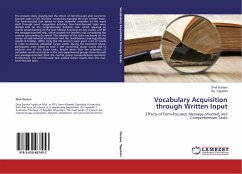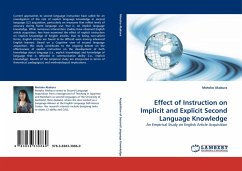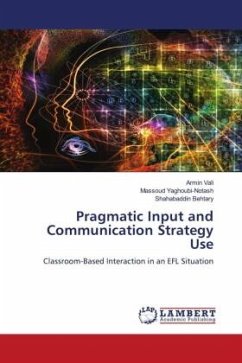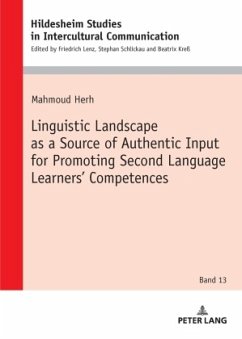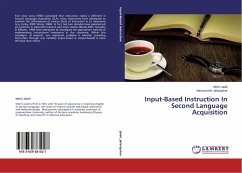
Input-Based Instruction In Second Language Acquisition
Versandkostenfrei!
Versandfertig in 6-10 Tagen
47,99 €
inkl. MwSt.

PAYBACK Punkte
24 °P sammeln!
Ever since Long (1983) concluded that instruction makes a different in Second Language Acquisition (SLA), many researchers have attempted to examine the effectiveness of various kinds of instruction in L2 classrooms (e.g. Farley, 2005; Wong, 2004). In fact, last two decades have experienced an evolution in classroom research and more studies (Benati,2001; Doughty & Williams, 1998) have attempted to investigate the appropriate method of implementing instructional treatments in the classroom. Within this paradigm of research, one important problem is whether providing instruction through one mod...
Ever since Long (1983) concluded that instruction makes a different in Second Language Acquisition (SLA), many researchers have attempted to examine the effectiveness of various kinds of instruction in L2 classrooms (e.g. Farley, 2005; Wong, 2004). In fact, last two decades have experienced an evolution in classroom research and more studies (Benati,2001; Doughty & Williams, 1998) have attempted to investigate the appropriate method of implementing instructional treatments in the classroom. Within this paradigm of research, one important problem is whether providing instruction through one modality (input-based or output-based) is more effective than others.



